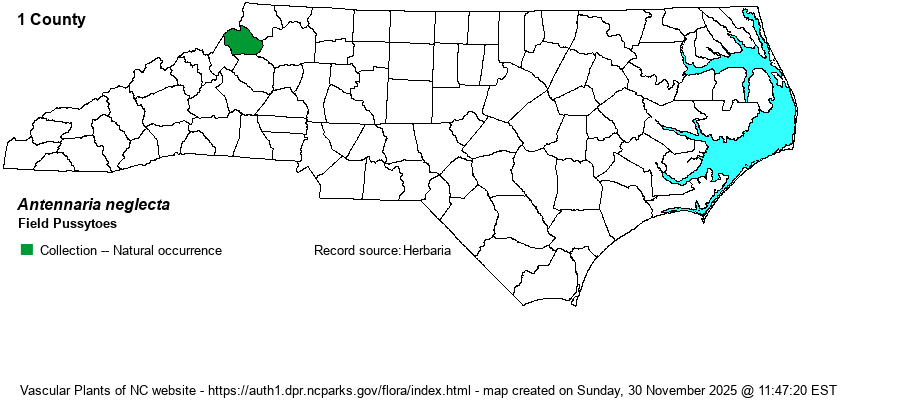| Author | Greene | |
| Distribution | Northern Mountains. A single specimen from Watauga County, collected in 1954 and at herbarium BOON, is purportedly this species. It needs to be carefully checked for identification. Several more specimens from one locality in Madison County turn out to be A. howellii ssp. neodioica.
N.S. to N.W.T., south to VA, northwestern NC, KY, AR, OK, CO. | |
| Abundance | Presumably very rare, but more data are needed. No information on the size of the Watauga County population. Weakley's (2024) map agrees, and it shows "rare" and just for the NC Mountains. The taxonomy of the genus is unsettled, and specimens can be difficult to sort into species, much less into subspecies and varieties. This is a Watch List species (W7) with a State Rank of S1?. | |
| Habitat | No data for NC. Elsewhere in the range, it occurs in woodland and forest openings, clearings, outcrops, ledges, and roadsides. | |
| Phenology | Flowering and fruiting April-June. | |
| Identification | The species looks very similar to Howell's Pussytoes (A. howellii) and is separated by technical characters. This species has: "Middle and upper cauline leaves tipped with flags; mature basal leaves glabrous, young basal leaves pubescent, glabrescent with age; species sexual, populations consisting of both pistillate and staminate plants" (Weakley 2024), versus A. howellii having "Middle and upper cauline leaves blunt or with subulate tips (only those leaves immediately around the corymb with flags); mature and young basal leaves pubescent; species apomictic, populations consisting of pistillate plants only" (Weakley 2024). Thus, look for single-veined basal leaves that are glabrous (when mature), versus leaves that are pubescent in A. howellii. | |
| Taxonomic Comments | None. This species was not known as far south as NC when RAB (1968) was published.
| |
| Other Common Name(s) | None | |
| State Rank | S1? | |
| Global Rank | G5 | |
| State Status | W7 | |
| US Status | | |
| USACE-agcp | UPL link |
| USACE-emp | UPL link |

